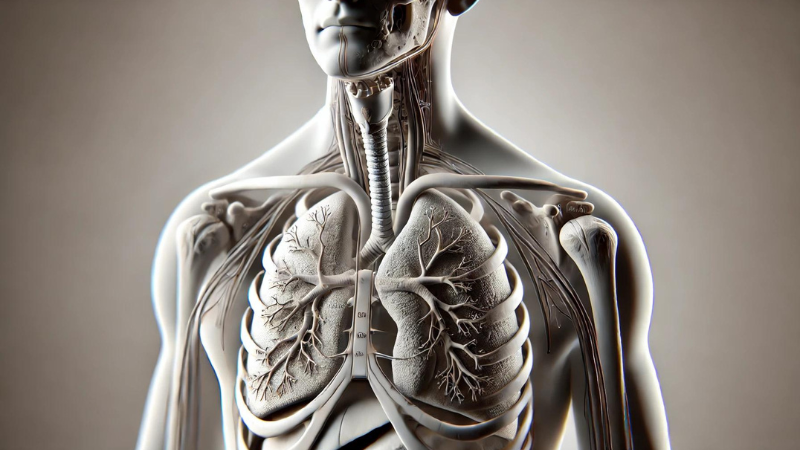Respiratory Diseases: Causes, Symptoms, and Effective Treatments for Lung Health
Sep 25, 2024
Respiratory Diseases: Causes, Symptoms, and Effective Treatments for Better Lung Health
In recent years, India has experienced a surge in respiratory diseases, which can be attributed to several factors:
Air Pollution
India is home to some of the world’s most polluted cities. With the increased use of fossil fuels, industrial emissions, and vehicular exhaust, the air quality has deteriorated significantly. Particulate matter (PM2.5) and other harmful pollutants aggravate respiratory conditions, leading to chronic issues like asthma and COPD (Chronic Obstructive Pulmonary Disease).
Urbanization and Congestion
Rapid urbanization in India has resulted in densely populated areas with poor air circulation and increased exposure to pollutants. This overpopulation not only exacerbates pollution but also limits access to clean air. As a result, respiratory diseases such as bronchitis and chronic respiratory infections have become more common.
Climate Change
India’s climate is becoming increasingly unpredictable due to global warming. Rising temperatures and frequent dust storms in certain regions have led to a spike in respiratory issues. Seasonal allergies, triggered by changing pollen levels, are also contributing to respiratory conditions in many urban and rural areas.
Smoking and Tobacco Use
Tobacco use remains a significant cause of respiratory disease in India. Smoking is a major risk factor for the development of lung cancer, chronic bronchitis, and emphysema. Despite public awareness campaigns, smoking remains prevalent, further increasing the burden of respiratory diseases.
Lack of Access to Healthcare
Many people, particularly in rural areas, lack access to quality healthcare, which results in late diagnoses and improper management of respiratory conditions. Without timely intervention, conditions such as asthma and COPD worsen over time.
Occupational Hazards
India’s large workforce in sectors such as construction, mining, and manufacturing is often exposed to harmful dust, chemicals, and toxins. Workers in these environments are at a higher risk of developing occupational lung diseases, such as pneumoconiosis and silicosis.
Indoor Pollution
Indoor air pollution caused by the use of solid fuels like wood and cow dung for cooking in rural homes also contributes to respiratory illnesses. Women and children are particularly vulnerable due to prolonged exposure to smoke and particulate matter.
Common Respiratory Diseases in India
- Asthma: A chronic condition where the airways become inflamed, causing difficulty breathing.
- COPD: A group of progressive lung diseases, primarily emphysema and chronic bronchitis.
- Tuberculosis: A bacterial infection affecting the lungs, which remains prevalent in India.
- Lung Cancer: Often linked to smoking and pollution, lung cancer cases are rising in India.
How to Combat Respiratory Diseases
- Air Quality Monitoring: Regularly checking air quality through apps or government updates can help individuals take precautions when pollution levels are high.
- Wearing Masks: Using masks, especially in polluted cities, can reduce exposure to harmful particles.
- Quit Smoking: Reducing tobacco use can significantly lower the risk of respiratory diseases.
- Improved Ventilation: Ensuring homes and workplaces have good air circulation can help reduce indoor pollution.
- Access to Healthcare: Increasing access to respiratory treatments, such as inhalers for asthma and medications for COPD, can improve outcomes for patients.
FAQs About Respiratory Diseases in India
Q1: What are the primary causes of respiratory diseases in India?
A: Air pollution, smoking, and occupational exposure are the leading causes, along with poor healthcare access and climate change.
Q2: How can I protect myself from air pollution in India?
A: Avoid outdoor activities when air quality is poor, use air purifiers indoors, and wear masks in highly polluted areas.
Q3: What are the symptoms of common respiratory diseases?
A: Symptoms include coughing, wheezing, shortness of breath, chest pain, and fatigue.
Q4: How does smoking affect respiratory health?
A: Smoking damages the lungs, leading to chronic conditions like emphysema, bronchitis, and lung cancer.
Conclusion
The growing cases of respiratory disease in India are driven by a combination of environmental, occupational, and lifestyle factors. Addressing these challenges requires coordinated efforts between the government, healthcare providers, and individuals to mitigate risk factors and improve respiratory health.
For more information on respiratory products and treatment options, visit Sterisonline Respiratory Care.
Recent Post

Cholestyramine Powder:A Trusted Solution for High Cholesterol & Bile Acid Diarrhea

Sitagliptin and Empagliflozin:A Modern Combination for Better Diabetes Control

Levosalbutamol Sulphate Ambroxol Hydrochloride and Guaiphenesin Syrup:Effective Relief for Cough and Chest Congestion

Pregabalin Capsule 300 mg:Advanced Therapy for Neuropathy & Chronic Pain

Salbutamol Nebuliser Solution:Uses, Benefits & Safe Inhalation Guide for Indian Patients

Sucralfate Tinidazole and Povidone Iodine Ointment:Best Ointment for Skin and Wound Care

Folic Acid Vitamin B12 Zinc and Iron Tablets:Boost Blood Health and Immunity Naturally

Canagliflozin 100 mg Uses in Hindi:उपयोग, फायदे और सही तरीका

Vitamin E and Omega 3 Fatty Acids:The Perfect Duo for Immunity & Wellness

Lurasidone Hydrochloride Price: A Complete Medical Insight

